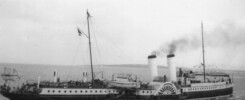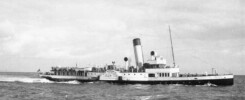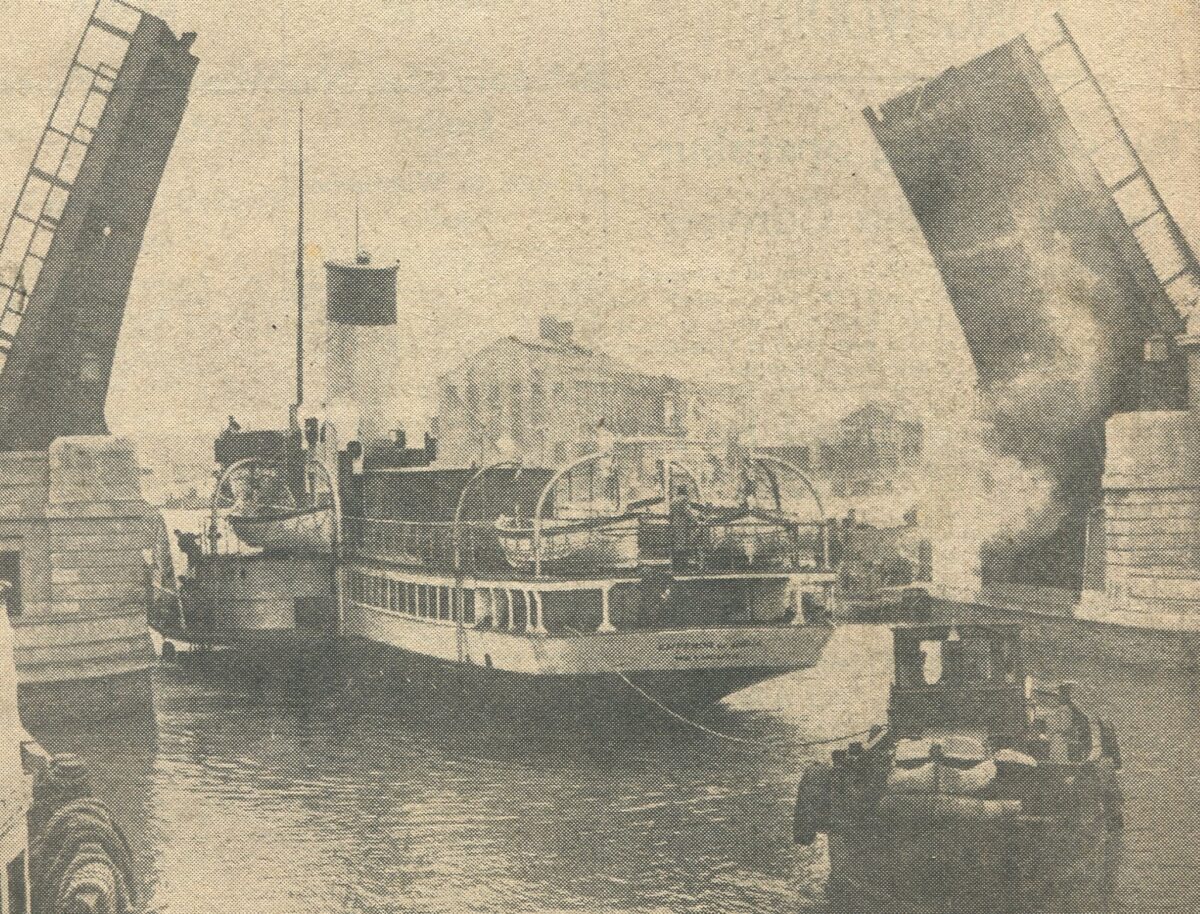
Cosens’ paddle steamer Emperor of India shifted ship from her berth in the Weymouth Backwater through the Town Bridge on Monday 21st January 1957, was put in charge of a Belgian tug the following day and left Weymouth for the last time under tow for the Van Heyghen Brothers’ breakers yard in Ghent on Thursday 24th January arriving in Belgium the following day Friday 25th. The ship from which the picture above was taken was Cosens’s second Monarch, the bow of which is just visible bottom left.
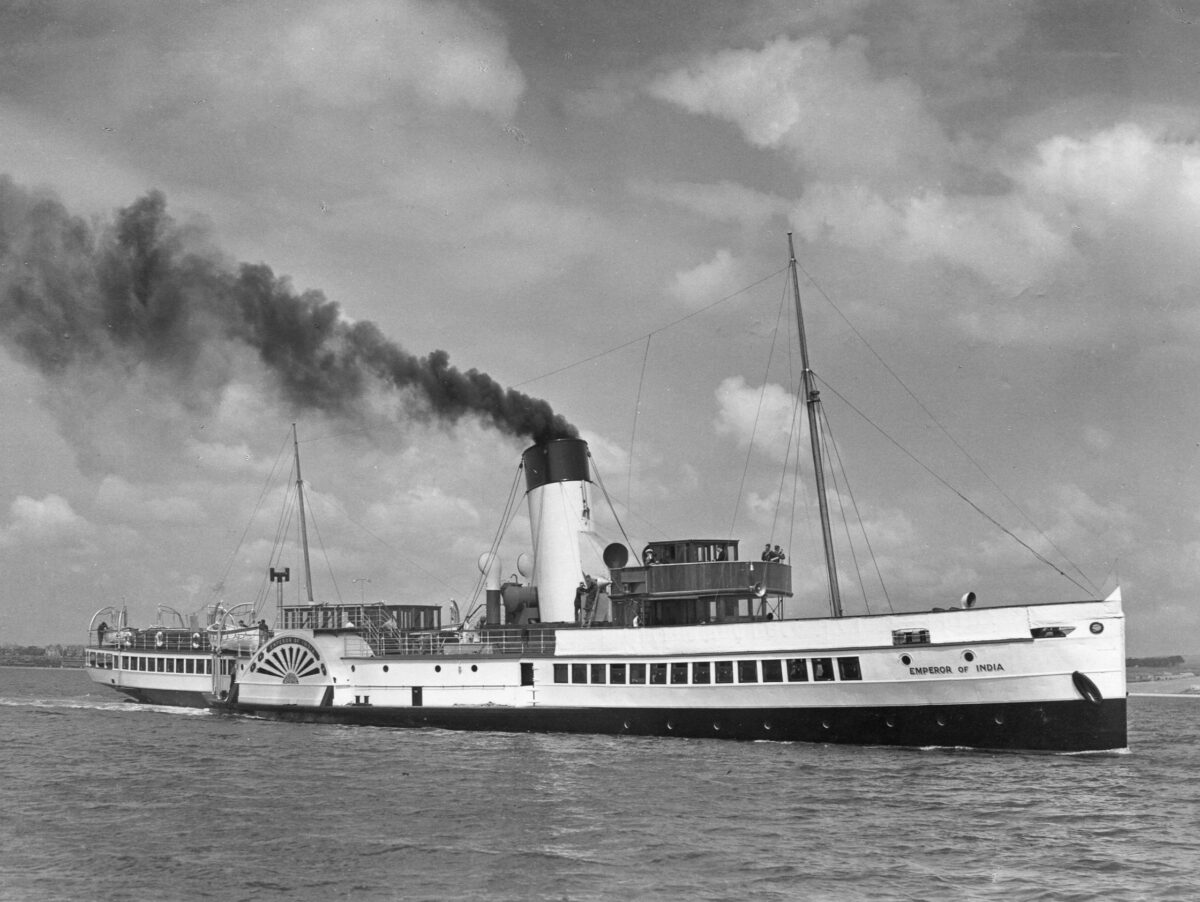
Emperor of India had been given a major rebuild after the Second World War and emerged in sparkling form in 1948 with palatial accommodation compared with most excursion paddle steamers of the time. However, she was big and being big brings with it the need for big revenue to sustain the operation. She needed more paint to paint her, more crew to man her and more fuel to push her along than any other paddler in the Cosens’s fleet.
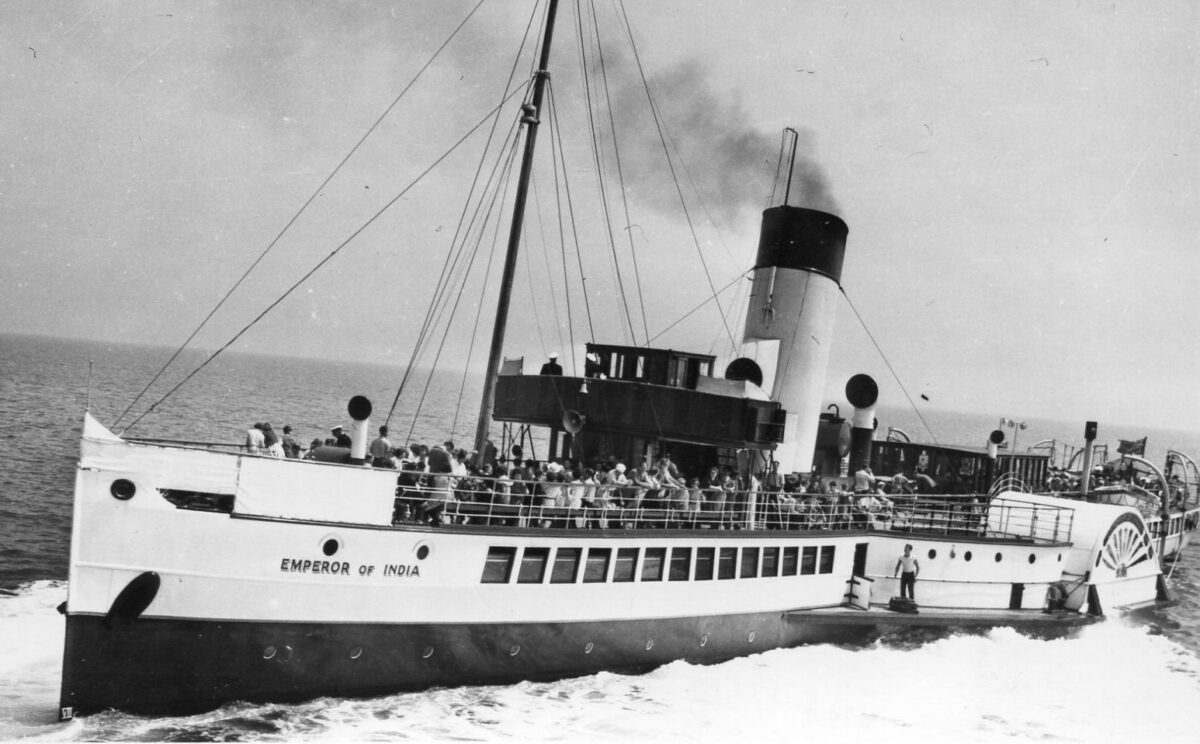
Being over 500GRT brought with it an expensive raft of additional things with which she had to comply. For example, because of her engine size, she was the only one of Cosens’s paddle steamers to require a fully certificated sea-going Chief Engineer with a Steam Endorsement. All the others were able to sail with engineers with either lesser, and therefore cheaper, tickets or with special dispensations sometimes issued by the Board of Trade to highly experienced men without formal certificates of competency to sail as Chief Engineer on specific vessels within defined coastal areas.
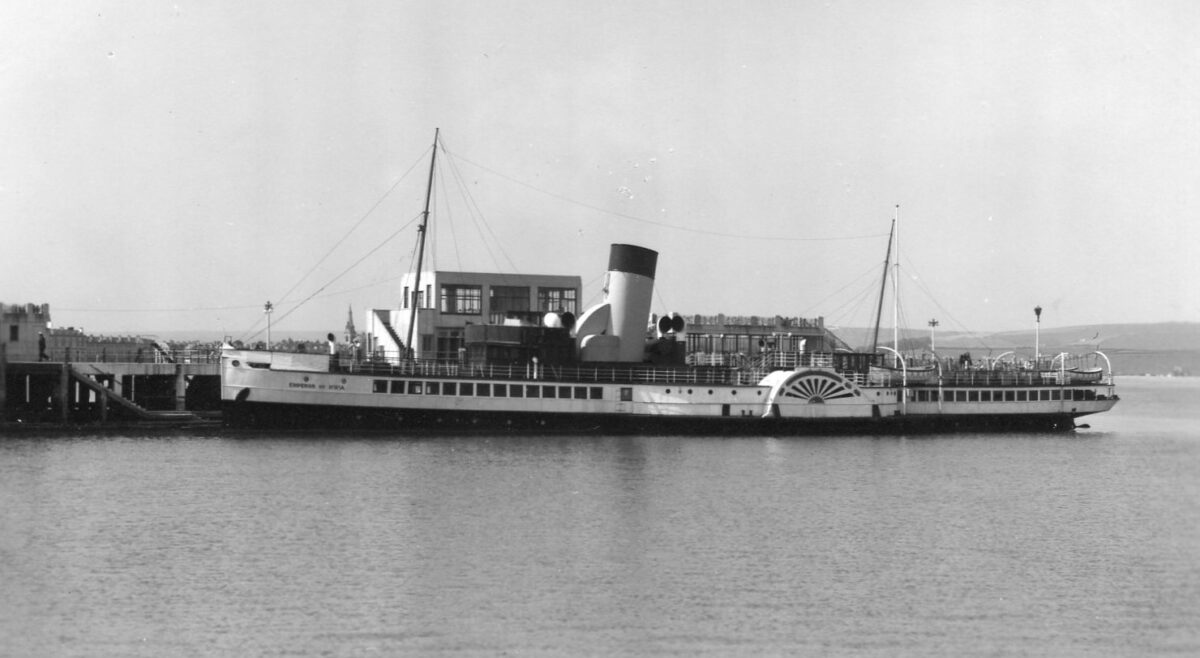
Emperor only had nine years of operation in her revitalised form before being withdrawn after the 1956 season not because she was deemed to be too old but rather because she was just too big to be sustainable in the available market.
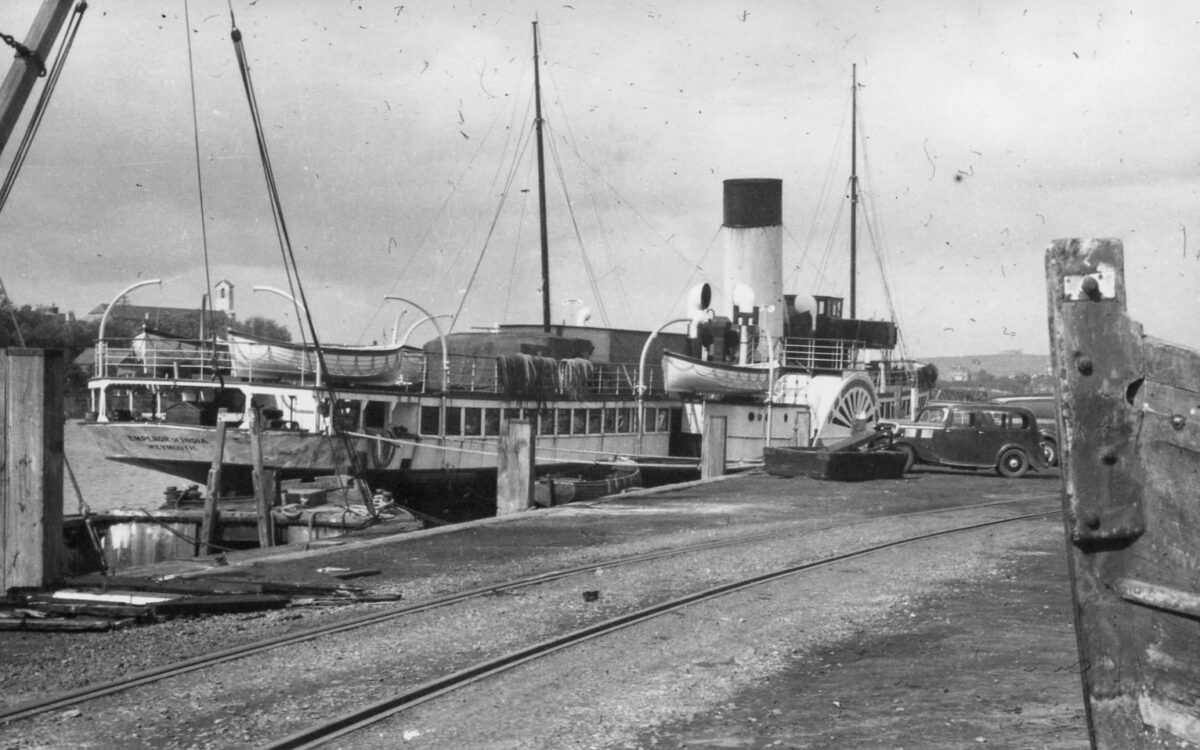
The international political situation also hadn’t helped with the Suez Crisis in 1956 causing volatility and uncertainty in people’s minds as Cosens’s General Manager Charles Kaile explained in an interview with the Bournemouth Times.
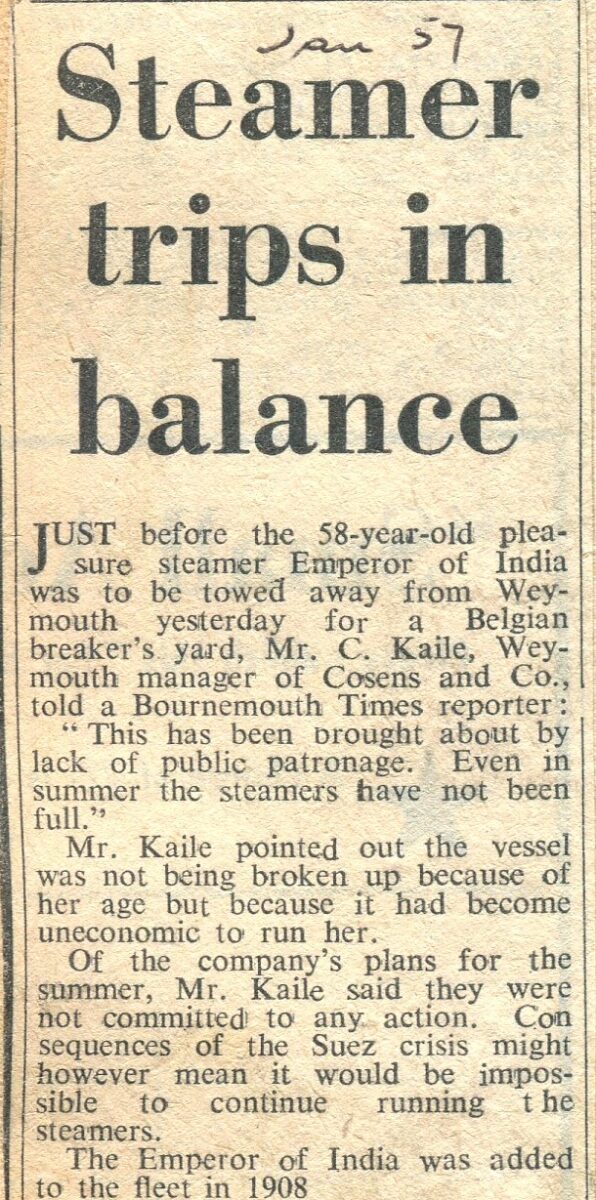
In the end Suez did not precipitate a complete abandonment of Cosens’s paddle steamer services as Mr Kaile had feared in his interview and Embassy and Monarch were based at Bournemouth and Consul at Weymouth for 1957. Indeed Suez provided a silver lining to the cloud in that Cosens got a better price for the Emperor than might otherwise have been the case as the price of scrap metal had shot up during the conflict with the markets fearing that an extended war might be in the offing.
A report in issue number 4 of Paddle Wheels for January/February 1961 suggests that not all of the Emperor was cut up in Belgium and that her hull, or part of her hull, had survived as a dumb barge. Poole tug owner Harry Rose had been to Belgium on business in 1960 and subsequently told Embassy’s master Capt Haines that he had been informed by a Belgian official that the remains of the Emperor’s hull still existed and was berthed in Antwerp. Mr Rose didn’t have the time or opportunity to check this out so it remains an intriguing little mystery to ponder over the chestnuts.
Kingswear Castle returned to service in 2023 after the first part of a major rebuild which is designed to set her up for the next 25 years running on the River Dart. The Paddle Steamer Kingswear Castle Trust is now fund raising for the second phase of the rebuild. You can read more about the rebuilds and how you can help if you can here.
John Megoran
This article was first published on 25th January 2021.

